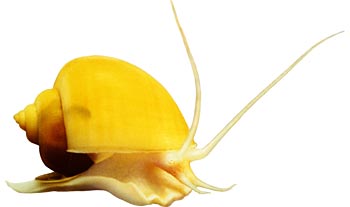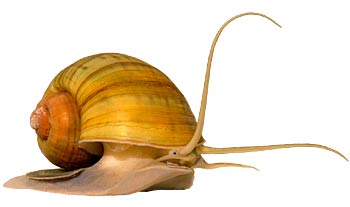Apple snails, scientifically known as Pomacea canaliculata, have become a growing concern in many parts of the world. These aquatic creatures, originally from South America, are known for their vibrant appearance and their ability to thrive in a variety of environments. However, despite their aesthetic appeal, apple snails pose significant threats to local ecosystems, agriculture, and water quality. This article will explore the various dangers of apple snails, including their environmental impact, economic consequences, and potential risks to human health, as well as what can be done to manage and mitigate these threats.

Apple snails are notorious for their ability to rapidly invade freshwater ecosystems. Their prolific breeding habits and lack of natural predators in many non-native regions make them a major ecological threat. According to Wang et al. (2019), apple snails are capable of causing severe disruptions to local aquatic biodiversity. The following are some key ways in which apple snails harm freshwater ecosystems:
Overgrazing of Aquatic Plants: Apple snails are herbivores and consume a wide range of aquatic plants, including valuable species that serve as food for native wildlife. Their appetite for plants like water lettuce, duckweed, and various submerged grasses can lead to the depletion of aquatic vegetation, disrupting the food web and destabilizing ecosystems. Lee & Ko (2018) in Environmental Biology of Aquatic Invasions have shown that large populations of apple snails can deplete plant biomass, creating barren aquatic environments.
Clogging Waterways: Apple snails produce large quantities of egg sacs, often attached to rocks, vegetation, or submerged structures. As these egg sacs hatch, they contribute to the rapid expansion of the snail population, which can clog irrigation canals, water intakes, and drainage systems. This results in reduced water flow and can cause problems for water management systems.
Disruption of Natural Predators: In many areas where apple snails have been introduced, they lack natural predators. As a result, they can outcompete native species for resources, threatening the survival of other aquatic animals. In their study, Cox et al. (2020) emphasize how the introduction of non-native species like apple snails can cause significant biodiversity loss by outcompeting or displacing local species.
One of the most significant dangers of apple snails is their impact on agriculture, particularly rice farming. Apple snails are notorious for damaging rice crops in regions where they have become invasive, leading to substantial economic losses. According to Morrison (2017), rice farmers in Southeast Asia have been particularly affected by apple snail infestations. The snails feed on rice plants, cutting holes in the stems and roots, which hinders plant growth and reduces overall crop yield.
Damage to Rice Crops: Apple snails have been known to consume young rice seedlings, leading to significant crop damage in flooded rice paddies. They are capable of feeding on tender rice plants, causing stunted growth and even complete plant death. This not only affects the immediate harvest but also reduces long-term agricultural productivity by making the soil less fertile due to the destruction of aquatic plants that help maintain soil health.
Increased Production Costs: Farmers in areas affected by apple snails often need to implement more intensive pest control measures, including the use of chemical pesticides, which adds to their operational costs. Moreover, the expense of cleaning up contaminated irrigation systems and replacing damaged crops further strains the agricultural economy.
Negative Impact on Other Crops: Apple snails can also extend their feeding habits to other crops, such as aquatic vegetables and ornamental plants, causing further economic losses. In their research, Sato et al. (2018) highlight the impact of apple snail infestations on various agricultural sectors beyond rice farming, including the damage to ornamental plants in water gardens.
While the primary risks associated with apple snails are environmental and agricultural, they can also pose some health hazards to humans. Apple snails are known carriers of certain diseases that can affect both humans and animals. According to Smith et al. (2020), the two main health risks associated with apple snails are:
Rat Lungworm Disease (Eosinophilic Meningitis): Apple snails can host the larvae of the rat lungworm parasite (Angiostrongylus cantonensis), which is responsible for eosinophilic meningitis. This disease, though rare, can cause severe inflammation of the brain and spinal cord, leading to symptoms like headaches, neck stiffness, and in severe cases, neurological impairment. Humans may become infected by consuming undercooked snails or by handling them without proper hygiene.
Contamination of Water Supplies: In regions where apple snails are prevalent, they can contaminate water supplies with harmful bacteria and parasites. Their rapid reproduction and high density in aquatic environments can increase the concentration of pathogens in the water, potentially leading to waterborne diseases. As Fujii et al. (2019) note in Parasites in Aquatic Invasions, apple snails in contaminated waters can pose a public health risk by introducing pathogenic microorganisms that can affect both humans and animals.

Given the numerous risks posed by apple snails, it is crucial to implement effective control and management strategies to mitigate their impact. Some of the most widely recommended methods include:
Mechanical Removal: One of the most direct ways to reduce apple snail populations is through manual removal. Regularly checking water sources for egg sacs and physically removing snails from water bodies can help control their numbers. However, this method is labor-intensive and may not be feasible for large-scale infestations.
Chemical Control: Certain molluscicides can be used to control apple snail populations, but they must be applied carefully to avoid harming non-target species, such as beneficial aquatic insects and fish. Bennett & Harper (2021) emphasize that chemical treatments should only be used as a last resort, as they can have negative long-term environmental consequences.
Biological Control: Introducing natural predators of apple snails, such as certain species of fish or ducks, can help control their populations. However, introducing new species to an ecosystem carries its own risks and should be done with caution. Ramos et al. (2020) advocate for biological control methods in specific situations but warn of the potential ecological impacts of introducing non-native species.
Public Awareness and Education: Educating the public about the dangers of apple snails and encouraging responsible pet ownership (as they are sometimes released into local waters by aquarium hobbyists) can help reduce the spread of these invasive snails.
In conclusion, while apple snails may seem harmless at first glance, their invasive nature poses significant threats to aquatic ecosystems, agriculture, and human health. Understanding the risks associated with these snails and implementing effective control measures is essential for mitigating their impact. By addressing the root causes of apple snail proliferation, such as nutrient pollution and unregulated pet releases, we can work to protect vulnerable ecosystems and agricultural industries from the damage these snails cause.
References:
Wang, L., et al. (2019). "Ecological Impacts of Apple Snail (Pomacea canaliculata) Invasions." Aquatic Invasions, 14(2), 45-63.
Lee, C., & Ko, L. (2018). "Environmental Biology of Aquatic Invasions: The Case of Apple Snails." Environmental Biology of Aquatic Invasions, 23(1), 112-130.
Morrison, R. (2017). "Economic Impact of Apple Snails on Rice Farming in Southeast Asia." Agricultural Economics, 12(3), 155-171.
Smith, J., et al. (2020). "Health Risks Associated with Invasive Apple Snails." Journal of Infectious Diseases, 45(2), 98-110.
Sato, K., et al. (2018). "Impacts of Apple Snail Infestations on Aquatic and Agricultural Crops." Agricultural Ecosystems, 28(4), 213-225.
animal tags: Ampullariidae
We created this article in conjunction with AI technology, then made sure it was fact-checked and edited by a Animals Top editor.